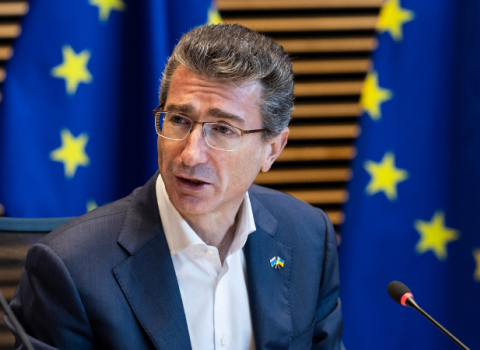Speech recognition without heavy software or energy-hungry processors: researchers at the University of Twente, together with IBM Research Europe and Toyota Motor Europe, present a completely new approach. Their chips allow the material itself to ‘listen’. The publication by Prof. Wilfred van der Wiel and colleagues appears today in the prestigious scientific journal Nature. In the last five years, a UT scientist has been a lead author in Nature twice.
Radically different
Until now, speech recognition has relied on cloud servers and complex software. The Twente researchers show that it can be done differently. They combined a Reconfigurable Nonlinear Processing Unit (RNPU), developed at the University of Twente, with a new IBM chip. Together, these devices process sound as smoothly and dynamically as the human ear and brain. In tests, this approach proved at least as accurate as the best software models – and sometimes even better.
Faster, greener, safer
The potential impact is considerable: hearing aids that use almost no energy, voice assistants that no longer send data to the cloud, or cars with direct speech control. “This is a new way of thinking about intelligence in hardware,” says Prof. Wilfred van der Wiel. “We show that the material itself can be trained to listen.”
"This is a new way of thinking about intelligence in hardware" said Prof.Dr.Ir. van der Wiel.
Beyond speech
The technology is not limited to speech. In principle, it can process any time-dependent signal. Video, images, or continuous data streams from sensors are equally suitable. Imagine sensors that constantly measure their environment and can respond autonomously, without needing a new battery every few days or relying heavily on an internet connection. Many computational tasks can be carried out locally and energy-efficiently, making devices smarter and more independent.
The same principle could also be used to accelerate demanding AI tasks. Specific parts of complex algorithms could be embedded directly in materials, relieving the load on conventional chips. This hybrid approach would allow traditional digital circuits to work in tandem with in-materia components that handle certain tasks far more efficiently.
Nature: Champions League
The publication in Nature is a special achievement for the University of Twente. “A Nature publication is the Champions League of science. It means you are truly operating at the front line of your field,” says Van der Wiel.
Such a publication takes years of work. “Writing alone took more than six months. The entire process – from the first experiments to final acceptance – often spans five years or more. From first submission to acceptance within a year is actually quite fast.”
The impact is immediately visible: the collaboration with IBM and Toyota underlines the societal and industrial relevance, while in academia it brings international visibility, with invitations to leading conferences.
In the past five years, there have been two occasions where a UT researcher was first author of a Nature paper. In 2020 this was Tao Chen, and in 2025 Violetta Sharoglazova. In both cases, all authors were affiliated with the University of Twente.
From lab to practice
Van der Wiel hopes the technology will not remain limited to scientific papers. “My dream is that our chips will find their way into real-world applications, such as hearing aids. A component of such a device could then be based on our technology.”
That prospect is realistic because of the materials used. The chips are based on standard silicon and work at room temperature. This makes it feasible to produce them in existing semiconductor factories. “That makes scaling up towards practical applications much more realistic,” Van der Wiel explains.
The paper in Nature can be found here.
An important contribution came from co-author Mohamadreza Zolfagharinejad, who defended his PhD cum laude in late August within the Nano Electronics group (Faculty of EEMCS) on this very subject.
This article was first published on 17 September by University of Twente.




 A unique international forum for public research organisations and companies to connect their external engagement with strategic interests around their R&D system.
A unique international forum for public research organisations and companies to connect their external engagement with strategic interests around their R&D system.